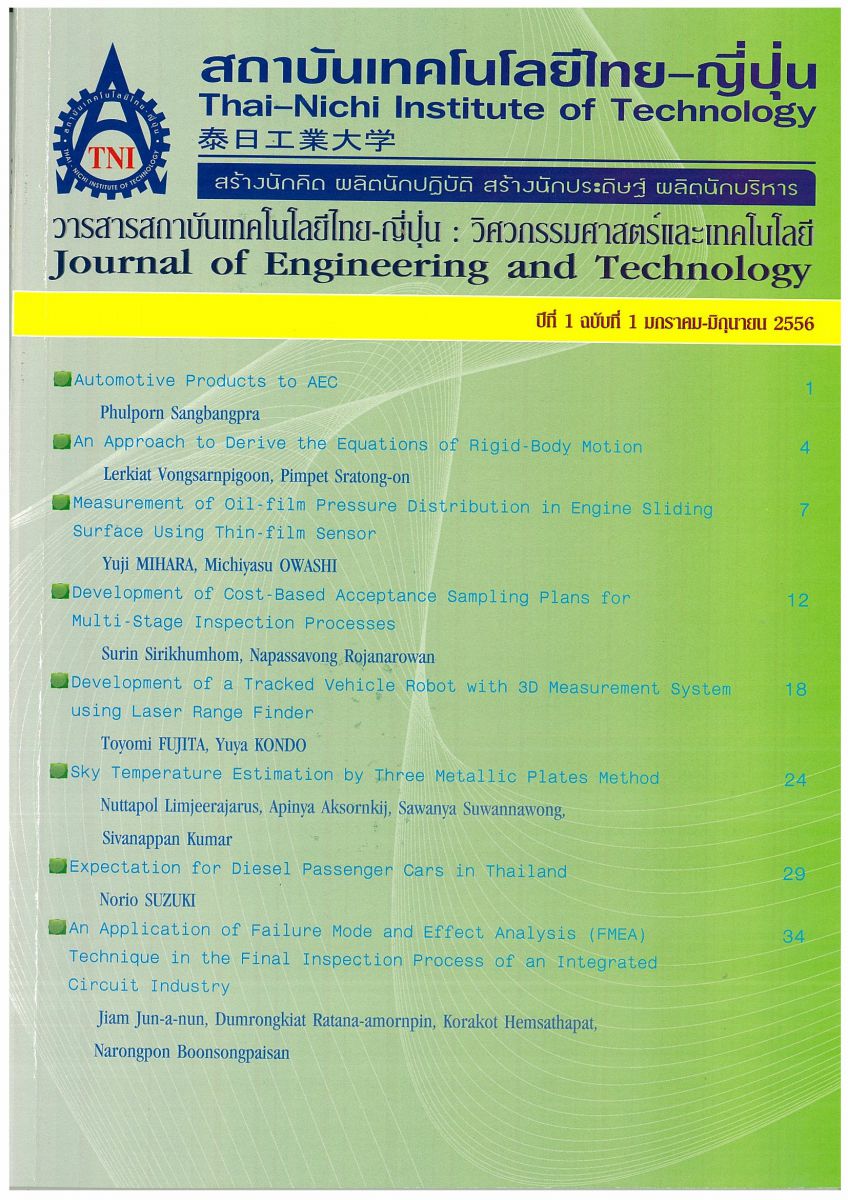Experimental Study on Planetary Drilling Machinability for CFRP
Main Article Content
Abstract
In this study, we express the locus of cutting edge motion on planetary drilling by computer simulating and clarify volume eliminated by bottom face cutting edge and side face cutting edge. Next we have constructed geometric cutting model of planetary drilling and found zero velocity point on bottom cutting edge which is caused by momentary relation among orbital eccentricity, planetary revolution speed and tool rotation spindle speed. In order to evaluate the influence on shapes of the cutting tool during the planetary drilling, we have focus on the shape of the cutting edge. Planetary drilling tools having several kinds of cutting edges are prepared and demonstrated. Considering the drilling load and chips, the appropriate shape of cutting edge was clarified.
Article Details
Article Accepting Policy
The editorial board of Thai-Nichi Institute of Technology is pleased to receive articles from lecturers and experts in the fields of engineering and technology written in Thai or English. The academic work submitted for publication must not be published in any other publication before and must not be under consideration of other journal submissions. Therefore, those interested in participating in the dissemination of work and knowledge can submit their article to the editorial board for further submission to the screening committee to consider publishing in the journal. The articles that can be published include solely research articles. Interested persons can prepare their articles by reviewing recommendations for article authors.
Copyright infringement is solely the responsibility of the author(s) of the article. Articles that have been published must be screened and reviewed for quality from qualified experts approved by the editorial board.
The text that appears within each article published in this research journal is a personal opinion of each author, nothing related to Thai-Nichi Institute of Technology, and other faculty members in the institution in any way. Responsibilities and accuracy for the content of each article are owned by each author. If there is any mistake, each author will be responsible for his/her own article(s).
The editorial board reserves the right not to bring any content, views or comments of articles in the Journal of Thai-Nichi Institute of Technology to publish before receiving permission from the authorized author(s) in writing. The published work is the copyright of the Journal of Thai-Nichi Institute of Technology.
References
[2] E.Brinksmeier, Sascha Fangmann, I.Meyer. 2010. Production Engineering Research and Development. 2:277-283
[3] NEBUKA Teppei, TANAKA Hidetake, and YANAGI Kazuhisa., 2007, Proceedings of Asia symposium for Precision Engineering and Nanotechnology, 309-312.
[4] ISHIBASHI Tatsuya, TANAKA Hidetake, and YANAGI Kazuhisa., 2009, An analytical model for orbital drilling and its applicability to, Proceedings of the Twenty-Fourth Annual Meeting of the American society for Precision Engineering.
[5] Hidetake TANAKA, Shinji Obata and Kazuhisa YANAGI, Optimization of cutting edge configuration and machining conditions in orbital drilling, Proceedings of 4th CIRP International Conference on High Performance Cutting, 2010, p. 201-206.


